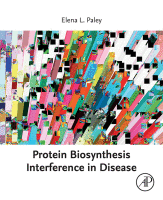- Series: Advances in Biochemistry in Health and Disease (Book 10)
- Paperback: 432 pages
- Publisher: Springer; Softcover reprint of the original 1st ed. 2014 edition (September 3, 2016)
- Language: English
- Type : PDF
Note : We will send ebook download link after confirmation of payment via paypal success
Payment methods: Visa or master card (Paypal)
Phospholipases in Health and Disease (Advances in Biochemistry in Health and Disease)
$17
by Paramjit S. Tappia
Phospholipases in Health and Disease (Advances in Biochemistry in Health and Disease)
by Paramjit S. Tappia
Phospholipases generate lipid signaling molecules through their hydrolytic action on phospholipids and are known to regulate function of a variety of cells under normal and diseased conditions. While several physiological, biochemical and molecular techniques have identified key players involved in different disease processes, phospholipases have also emerged as critical players in the pathogenesis of a number of different diseases including cancer and heart disease. In addition, phospholipases are also implicated in such conditions as brain disorder/injury, kidney and immune cell dysfunction.
Phospholipases in Health and Disease is a compilation of review articles dedicated to the study of the field with respect to biochemical and molecular mechanisms of normal and abnormal cell function. The wide range of area covered here is of interest to basic research scientists, clinicians and graduate students, who are engaged in studying pathophysiological basis of a variety of diseases. Furthermore, this book highlights the potential of the different phospholipases as therapeutic targets as well as part of prevention strategies. Twenty three articles in this book are organized in four sections that are designed to emphasize the most characterized forms of the phospholipases in mammalian cells. The first section discusses general aspect of phospholipases. Section two covers the role and function of phospholipase A in different pathophysiological conditions. The third section is focussed on phospholipase C which is believed to play a central role in transmembrane signaling. The final section covers phospholipase D which is present in a variety of different cells. The book illustrates that the activation of phospholipases is of fundamental importance in signal transduction affecting cell function. Overall, this book discusses the diverse mechanisms of phospholipase mediated signal transduction in different pathophysiological conditions and raises the possibility of specific forms of phospholipases serving as novel targets for drug development.
Product details
Related Products
Biochemistry Books
Krebs: Neue Chancen auf Gesundheit, 2. Aufl Edition (German Edition) (EPUB)
Biochemistry Books
Biotechnology for Waste Biomass Utilization (Original PDF from Publisher)
Biochemistry Books
Biochemistry Books
Biochemistry Books
Marine Biochemistry: Isolations and Techniques (Original PDF from Publisher)
Biochemistry Books
Biochemistry Books
Basic Sciences Books
A Visual Analogy Guide to Chemistry, 2nd Edition (Original PDF from Publisher)
Biochemistry Books
Harper’s Illustrated Biochemistry, Thirty-Second Edition 2022 Original PDF
Biochemistry Books
Biochemistry Books
Biochemistry Books
Biochemistry Books
Essentials of Medical Biochemistry: With Clinical Cases, 3rd Edition 2022 Original PDF
Biochemistry Books
Lippincott Illustrated Reviews: Biochemistry, 8th Edition 2021 EPUB & converted pdf
Biochemistry Books
Bioquímica médica, 5ª ed (Spanish Edition) 2019 EPUB + Converted PDF
Biochemistry Books
Biochemistry Books
Biochemistry Books
Biochemistry Books
Biochemistry Books
Biochemistry Books
Protocols in Biochemistry and Clinical Biochemistry 2020 Original pdf
Biochemistry Books
Proteolytic Signaling in Health and Disease 2021 Original pdf
Biochemistry Books
Protein Biosynthesis Interference in Disease 2021 Original pdf
Biochemistry Books
Biochemistry Books
Biochemistry Books
Overflow Metabolism From Yeast to Marathon Runners 2018 Original pdf
Biochemistry Books
The Nutritional Biochemistry of Chromium (III) 2019 Original pdf
Biochemistry Books
Biochemistry Books
Biochemistry Books
Introductory Experiments on Biomolecules and their Interactions 2016 Original pdf
Biochemistry Books
Hormone Metabolism and Signaling in Plants 2017 Original pdf
Biochemistry Books
Herbal Biomolecules in Healthcare Applications 2021 Original pdf
Biochemistry Books
GPCRs Structure, Function, and Drug Discovery 2020 Original pdf
Biochemistry Books
Exercise, Sport, and Bioanalytical Chemistry Principles and Practice 2016 Original pdf
Biochemistry Books
Clinical Bioenergetics From Pathophysiology to Clinical Translation 2020 Original pdf
Biochemistry Books
Human Milk Biochemistry and Infant Formula Manufacturing Technology 2020 Original pdf
Biochemistry Books
Biochemistry Books
Biochemistry of Lipids, Lipoproteins and Membranes 2015 Original pdf
Biochemistry Books
Biochemistry Books
Advanced Mechanical Models of DNA Elasticity 2016 Original pdf
Biochemistry Books
Biochemistry Books
Biochemistry Books
Mechanisms of Gene Regulation: How Science Works 2020 Original pdf
Biochemistry Books
Progress in the Chemistry of Organic Natural Products 113 2020 Original pdf
Biochemistry Books
Biochemistry Books
Nanomaterials and Environmental Biotechnology 2020 Original pdf
Biochemistry Books
Biochemistry Books
Histidine Phosphorylation Methods and Protocols 2020 Original pdf
Biochemistry Books
Chemische Biologie und Wirkstoffentwicklung 2020 Original pdf
Biochemistry Books
Biochemistry Books
Ion Mobility-Mass Spectrometry Methods and Protocols 2020 Original pdf
Biochemistry Books
Starch Structure, Functionality and Application in Foods 2020 Original pdf
Biochemistry Books
Biochemistry Books
Cellular-Molecular Mechanisms in Epigenetic Evolutionary Biology 2020 Original pdf
Biochemistry Books
Biochemistry Books
Biochemistry Books
Sustainable Green Chemical Processes and their Allied Applications 2020 Original pdf
Biochemistry Books
Biochemistry Books
Iron Geochemistry: An Isotopic Perspective 2020 Original pdf
Biochemistry Books
Mechanisms of Genome Protection and Repair 2020 Original pdf
Biochemistry Books
Biochemistry Books
Biochemistry Books
Hydrocarbons, Oils and Lipids: Diversity, Origin, Chemistry and Fate 2020 Original pdf
Biochemistry Books
Corynebacterium glutamicum Biology and Biotechnology 2020 Original pdf







































































































